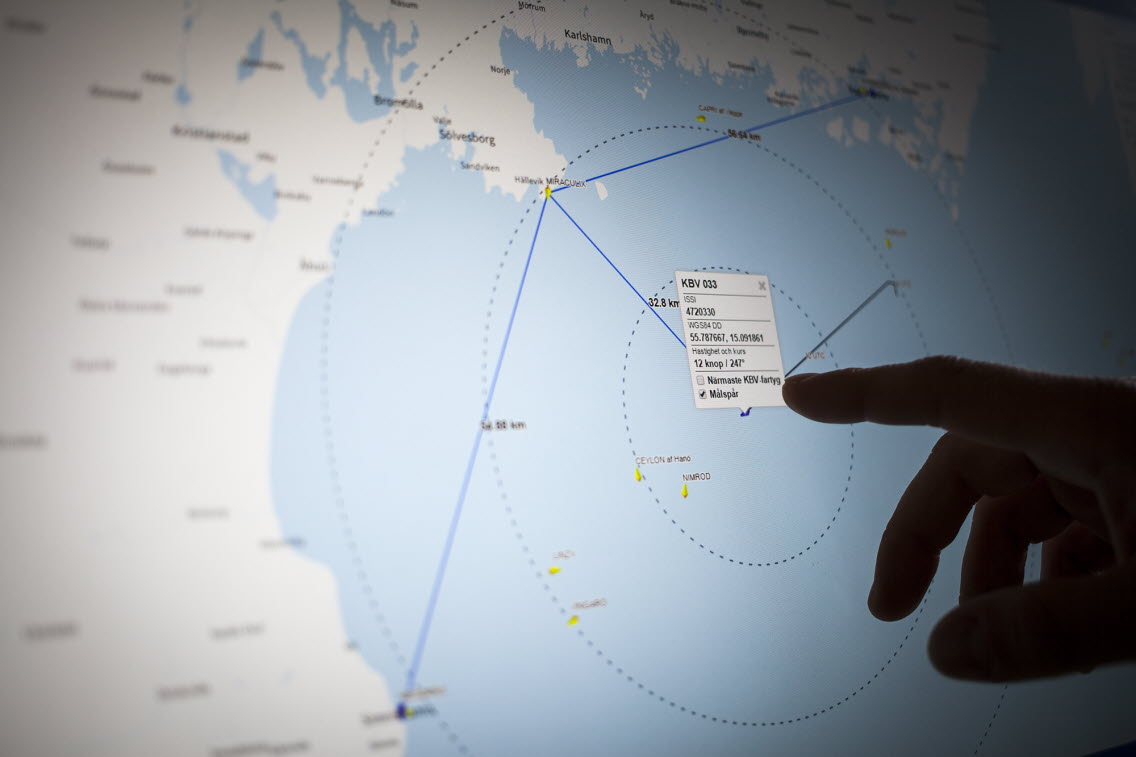Changes in the Baltic Sea – the shadow fleet is a growing environmental and security threat
5 March 2025 15:06

They go under the term “shadow fleet”. Poorly maintained vessels, commonly with an unclear ownership structure used to transport oil in order to circumvent Western sanctions against Russia. These vessels pose an increased risk of accidents and oil spills and this puts significant pressure on the Swedish Coast Guard, that has to assign an increasing amount of resources to monitoring and protecting the Baltic Sea.
Maritime traffic in the Baltic Sea has changed significantly. Since Russia’s invasion of Ukraine in 2022, Russian oil tankers have adjusted their routes and behaviour in order to get around sanctions, which has led to an increase in vessels operating under flags of convenience and with murky ownership structures.
“We can see a greater number of vessels that change their identity during transit and manipulate their AIS signals, making it more difficult to track their movements. These vessels pose both security and environmental risks,” says Mattias Lindholm, press officer with the Swedish Coast Guard.
A growing environmental threat
The term ”shadow fleet” refers to vessels attempting to hide their activities. These vessels commonly operate under the flag of smaller countries with a disproportionately large tanker fleet, that sometimes even lack a coastline. They can also be vessels that change their name and identity during transit and have unclear or negligible insurance. Many of these vessels are transporting oil to markets outside of the West, and this makes it difficult to track business transactions.
From the perspective of the Swedish Coast Guard, who are responsible for both monitoring and responding to maritime environmental incidents, one of the greatest dangers with the shadow fleet is their substandard safety practices and the often advanced age of the vessels. This increases the risk of accidents and oil spills that would result in severe consequences for the sensitive ecosystems in the Baltic Sea.
“We know that these vessels do not meet the safety standards that we regard as normal in this region. Finland have already banned the vessel Eagle S, that caused a cable rupture in the Gulf of Finland, due to serious its shortfalls in maritime safety,” says Mattias Lindholm.
Increased Coast Guard presence
In order to meet the changing threat posed by an increasing number of vessels that fall under the term shadow fleet, the Swedish Coast Guard has heightened its maritime monitoring efforts. By combining input from aerial reconnaissance, patrolling vessels and satellite imagery, they are mapping movement patterns and identifying potential risks.
“We have increased our level of maritime patrols and have also further developed our exchange of information with other authorities and international stakeholders. We need to be ready to act quickly in the event of a spill, or for that matter a new cable rupture,” says Mattias Lindholm.
Our heightened presence has also resulted in a closer dialogue with the Swedish Armed Forces, as the Baltic Sea plays a key role in European security policy.
New laws could strengthen Sweden’s total defence
The Coast Guard’s efforts related to the shadow fleet are part of a wider total defence. The authority plays a key role in maintaining security and environmental protection in Swedish waters, while at the same time cooperating with other authorities on strategic, tactical and operative levels.
“The global security situation is rapidly changing, and it’s crucial that we can adapt to this. An increase in the flow of information between authorities is vital if correct decisions are to be taken at the right time. We are currently working with a government assignment to further improve these cooperative channels,” says Mattias Lindholm.
Work is underway on legal reforms that would enable the more efficient exchange of information between the Swedish Coast Guard and other authorities. According to Mattias Lindholm, anything that can help Sweden to better understand future risks is of importance right now.
”We can’t predict where the next incident will occur, but we can make sure that we are prepared. The better we can understand movement patterns and risks, the better equipped we are to face the future”.
Changed 24 April 2025 15:06

